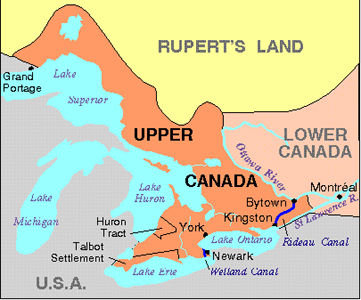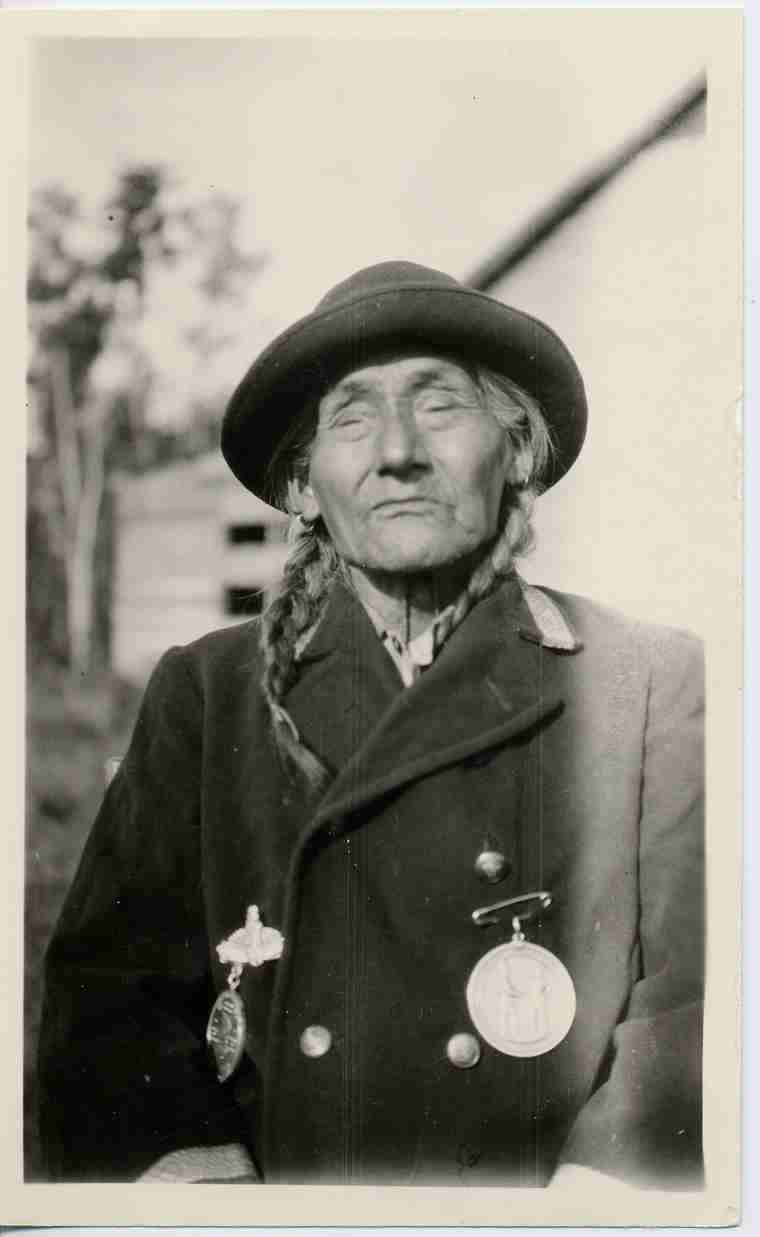Browse "History/Historical Figures"
-
Article
Editorial: The Stanley Flag and the “Distinctive Canadian Symbol”
The following article is an editorial written by The Canadian Encyclopedia staff. Editorials are not usually updated. Prime Minister Lester Pearson and John Matheson, one of his Liberal Members of Parliament, are widely considered the fathers of the Canadian flag. Their names were front and centre in 2015 during the tributes and celebrations to mark the 50th anniversary of the flag’s creation. But the role played by George Stanley is often lost in the story of how this iconic symbol came to be.
"https://d2ttikhf7xbzbs.cloudfront.net/media/media/a9adffc5-8796-4968-ac52-ab33df0fe6eb.jpg" // resources/views/front/categories/view.blade.php
https://d2ttikhf7xbzbs.cloudfront.net/media/media/a9adffc5-8796-4968-ac52-ab33df0fe6eb.jpg
-
Article
The Underground Railroad (Plain-Language Summary)
The Underground Railroad was a secret organization. It was made up of people who helped African Americans escape from slavery in the southern United States. The people in this organization set up a system of routes that escaped slaves could travel to find freedom in the northern United States and Canada. In the 1800s (the 19th century) between 30,000 and 40,000 escaped slaves travelled to British North America (Canada) through the Underground Railroad. (This article is a plain-language summary of the Underground Railroad in Canada. If you are interested in reading about this topic in more depth, please see our full-length entry on The Underground Railroad.)
"https://d2ttikhf7xbzbs.cloudfront.net/media/media/62778b7a-e28f-4fe4-96c6-ec4011ee3af2.jpg" // resources/views/front/categories/view.blade.php
https://d2ttikhf7xbzbs.cloudfront.net/media/media/62778b7a-e28f-4fe4-96c6-ec4011ee3af2.jpg
-
Editorial
Editorial: John Humphrey, Eleanor Roosevelt and the Universal Declaration of Human Rights
The following article is an editorial written by The Canadian Encyclopedia staff. Editorials are not usually updated. In 1946, John Humphrey became director of the United Nations Division on Human Rights, and Eleanor Roosevelt was named the United States representative to the UN’s Commission on Human Rights. Humphrey was an obscure Canadian law professor. Roosevelt was the world’s most celebrated woman. For two years, they collaborated on the creation of one of the modern world’s great documents: the Universal Declaration of Human Rights. It was adopted on 10 December 1948.
"https://d2ttikhf7xbzbs.cloudfront.net/media/media/6afcc1db-4a9a-4e2f-9a50-ad1981f54caf.jpg" // resources/views/front/categories/view.blade.php
https://d2ttikhf7xbzbs.cloudfront.net/media/media/6afcc1db-4a9a-4e2f-9a50-ad1981f54caf.jpg
-
Editorial
Alexander Dunn at the Battle of Balaclava
The following article is an editorial written by The Canadian Encyclopedia staff. Editorials are not usually updated.
"https://development.thecanadianencyclopedia.ca/images/tce_placeholder.jpg?v=e9dca980c9bdb3aa11e832e7ea94f5d9" // resources/views/front/categories/view.blade.php
https://development.thecanadianencyclopedia.ca/images/tce_placeholder.jpg?v=e9dca980c9bdb3aa11e832e7ea94f5d9
-
Article
Thomas Baillie
Thomas Baillie, soldier, administrator (b at Hanwell, Eng 4 Oct 1796; d at Boulogne, France 20 May 1863).
"https://development.thecanadianencyclopedia.ca/images/tce_placeholder.jpg?v=e9dca980c9bdb3aa11e832e7ea94f5d9" // resources/views/front/categories/view.blade.php
https://development.thecanadianencyclopedia.ca/images/tce_placeholder.jpg?v=e9dca980c9bdb3aa11e832e7ea94f5d9
-
Article
Thomas D'Arcy McGee
Thomas D’Arcy McGee, journalist, politician, poet (born 13 April 1825 in Carlingford, County Louth, Ireland; died 7 April 1868 in Ottawa, ON). Thomas D’Arcy McGee was dedicated to the cause of Irish national liberation. This pushed him towards revolutionary anti-British doctrine in his early years. However, he matured to become a staunch defender of British constitutional monarchy and a Father of Confederation. He was an advocate for minority rights at a time when the politics of ethnic and religious identity were intensely fraught. He was an incredibly eloquent public speaker and a passionate advocate for Canadian interests. However, his political transformation ultimately damaged his popularity with Irish nationalists, particularly the Fenians. He was assassinated in 1868.
"https://d2ttikhf7xbzbs.cloudfront.net/media/media/4a74eaf5-4691-4b89-9d50-e98da872ed41.jpg" // resources/views/front/categories/view.blade.php
https://d2ttikhf7xbzbs.cloudfront.net/media/media/4a74eaf5-4691-4b89-9d50-e98da872ed41.jpg
-
Article
Thomas Douglas, 5th Earl of Selkirk
Thomas Douglas, 5th Earl of Selkirk, colonizer (born 20 June 1771 on St Mary's Isle, Scotland; died 8 April 1820 in Pau, France).
"https://d2ttikhf7xbzbs.cloudfront.net/media/media/0c582e2e-b609-41c2-b9dc-50071198f9c4.jpg" // resources/views/front/categories/view.blade.php
https://d2ttikhf7xbzbs.cloudfront.net/media/media/0c582e2e-b609-41c2-b9dc-50071198f9c4.jpg
-
Article
Thomas Frobisher
Thomas Frobisher, fur trader (b at Halifax (?), Yorkshire, Eng 1744; d at Montréal 12 Sept 1788).
"https://d2ttikhf7xbzbs.cloudfront.net/Fort_de_ile_a_la_Crosse_en_1820.jpg" // resources/views/front/categories/view.blade.php
https://d2ttikhf7xbzbs.cloudfront.net/Fort_de_ile_a_la_Crosse_en_1820.jpg
-
Article
Thomas Head Raddall
Thomas Head Raddall, historical novelist (b at Hythe, Eng 13 Nov 1903; d at Liverpool, NS 1 Apr 1994). Raddall was brought as a boy to Nova Scotia, the province about which he was to write in a score of books, fictional and nonfictional.
"https://development.thecanadianencyclopedia.ca/images/tce_placeholder.jpg?v=e9dca980c9bdb3aa11e832e7ea94f5d9" // resources/views/front/categories/view.blade.php
https://development.thecanadianencyclopedia.ca/images/tce_placeholder.jpg?v=e9dca980c9bdb3aa11e832e7ea94f5d9
-
Article
Thomas James
Thomas James, explorer (b 1593; d 1635). He sailed from Bristol to Hudson Bay in 1631, 2 days before Luke FOX left on a rival voyage from London. The 2 met by chance at Cape Henrietta Maria (named after James's ship).
"https://development.thecanadianencyclopedia.ca/images/tce_placeholder.jpg?v=e9dca980c9bdb3aa11e832e7ea94f5d9" // resources/views/front/categories/view.blade.php
https://development.thecanadianencyclopedia.ca/images/tce_placeholder.jpg?v=e9dca980c9bdb3aa11e832e7ea94f5d9
-
Article
Thomas Pichon
Thomas Pichon, alias Thomas Tyrell, colonial official, spy, author (b at Vire, France 30 Mar 1700; d at St Helier, Jersey 22 Nov 1781).
"https://development.thecanadianencyclopedia.ca/images/tce_placeholder.jpg?v=e9dca980c9bdb3aa11e832e7ea94f5d9" // resources/views/front/categories/view.blade.php
https://development.thecanadianencyclopedia.ca/images/tce_placeholder.jpg?v=e9dca980c9bdb3aa11e832e7ea94f5d9
-
Article
Thomas Scott
Thomas Scott, insurgent, labourer (born c. 1842 in Clandeboye, County Down Ireland; died 4 March 1870, in Red River Colony). Scott was an Irish Protestant who moved to the Red River Colony in 1869 and joined the Canadian Party. His actions against the Provisional Government of Assiniboia twice led to his arrest and jailing. Scott was convicted of treason and executed by the provisional government, led by Louis Riel, on 4 March 1870. His execution led to the Red River Expedition, a military force sent to Manitoba by Prime Minister Sir John A. Macdonald to confront the Métis at Red River. From that point on, Protestant Ontarians, especially members of the powerful Orange Order, wanted retribution from Riel for Scott’s death. Scott’s execution led to Riel’s exile and to Riel’s own execution for treason in 1885.
"https://d2ttikhf7xbzbs.cloudfront.net/media/media/132c7732-6818-4002-b060-1a78ecef2729.jpg" // resources/views/front/categories/view.blade.php
https://d2ttikhf7xbzbs.cloudfront.net/media/media/132c7732-6818-4002-b060-1a78ecef2729.jpg
-
Article
Thomas Talbot
After 1825, Talbot's power began to decline for reasons that included a popular spirit of reform, increasing bureaucracy and Talbot's eccentricity. Socially intolerant and exclusive, he lived alone and isolated in his Pt Talbot "castle.
"https://d2ttikhf7xbzbs.cloudfront.net/media/media/d1817dce-5cf3-4afa-85b7-a8d39574989e.jpg" // resources/views/front/categories/view.blade.php
https://d2ttikhf7xbzbs.cloudfront.net/media/media/d1817dce-5cf3-4afa-85b7-a8d39574989e.jpg
-
Article
Thunderchild (Peyasiw-Awasis)
Thunderchild (also known as Peyasiw-Awasis or Kapitikow, Cree for “one who makes the sound”), Plains Cree chief (born 1849, likely along the South Saskatchewan River; died 29 June 1927 on the Thunderchild Reserve in Saskatchewan). Chief Thunderchild was a signatory to Treaty 6 in 1879. He was a strong defender of treaty rights and Indigenous land as well as traditional Cree lifeways. Thunderchild supported the right of every reserve on the Canadian Plains to have its own school.
"https://d2ttikhf7xbzbs.cloudfront.net/media/media/f90e98ff-1205-4c89-b418-0b20a109d26a.jpg" // resources/views/front/categories/view.blade.php
https://d2ttikhf7xbzbs.cloudfront.net/media/media/f90e98ff-1205-4c89-b418-0b20a109d26a.jpg
-
Article
Tillson Lever Harrison
Tillson Lever Harrison, physician, surgeon, army officer, adventurer (b at Tillsonburg, Ont 7 January 1881; d near Kaifeng, China, 10 January 1947). Also known as a writer, raconteur and humanitarian, Tillson Harrison has been touted as Canada's second Norman BETHUNE and the model for Indiana Jones.
"https://development.thecanadianencyclopedia.ca/images/tce_placeholder.jpg?v=e9dca980c9bdb3aa11e832e7ea94f5d9" // resources/views/front/categories/view.blade.php
https://development.thecanadianencyclopedia.ca/images/tce_placeholder.jpg?v=e9dca980c9bdb3aa11e832e7ea94f5d9
